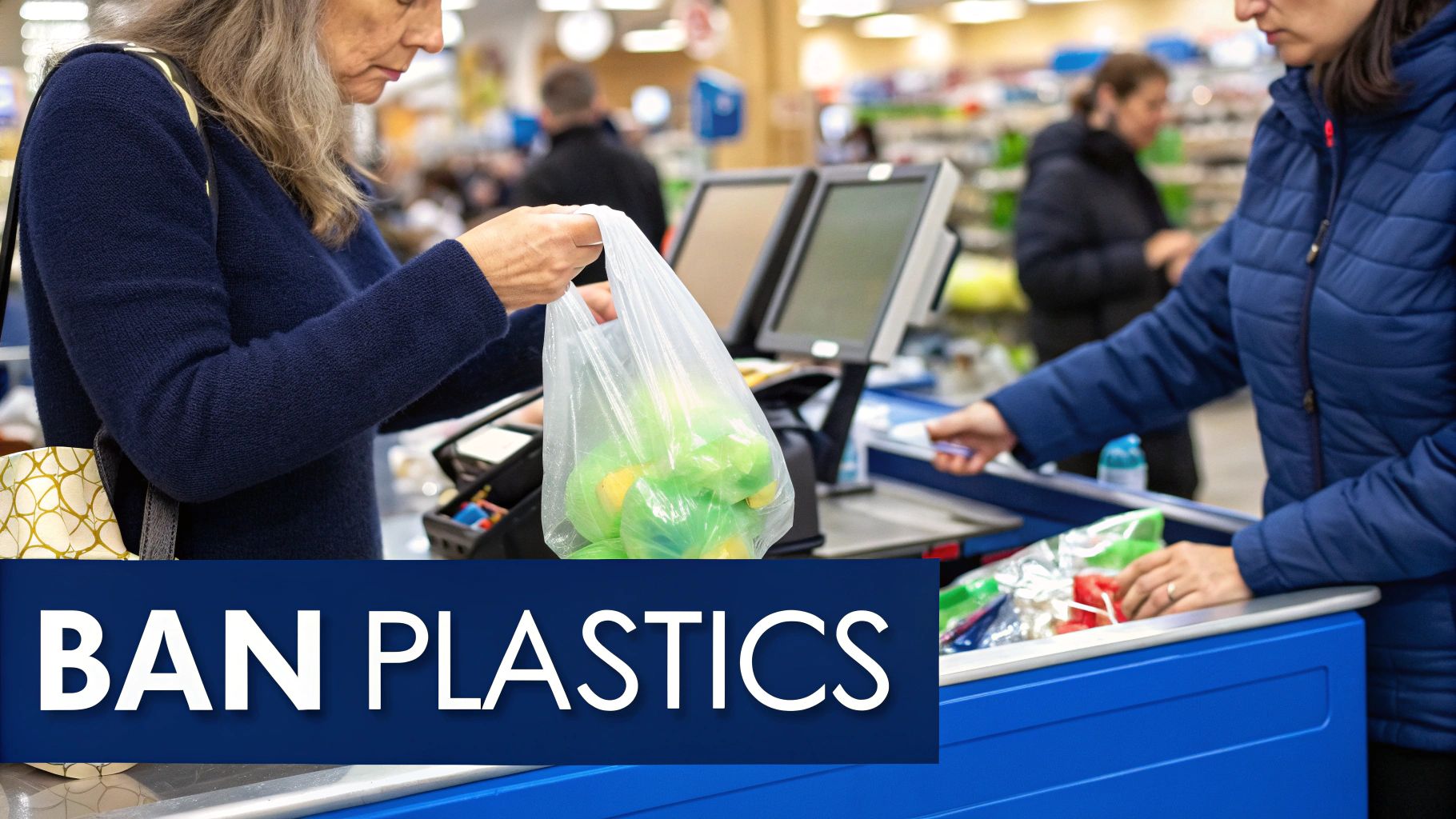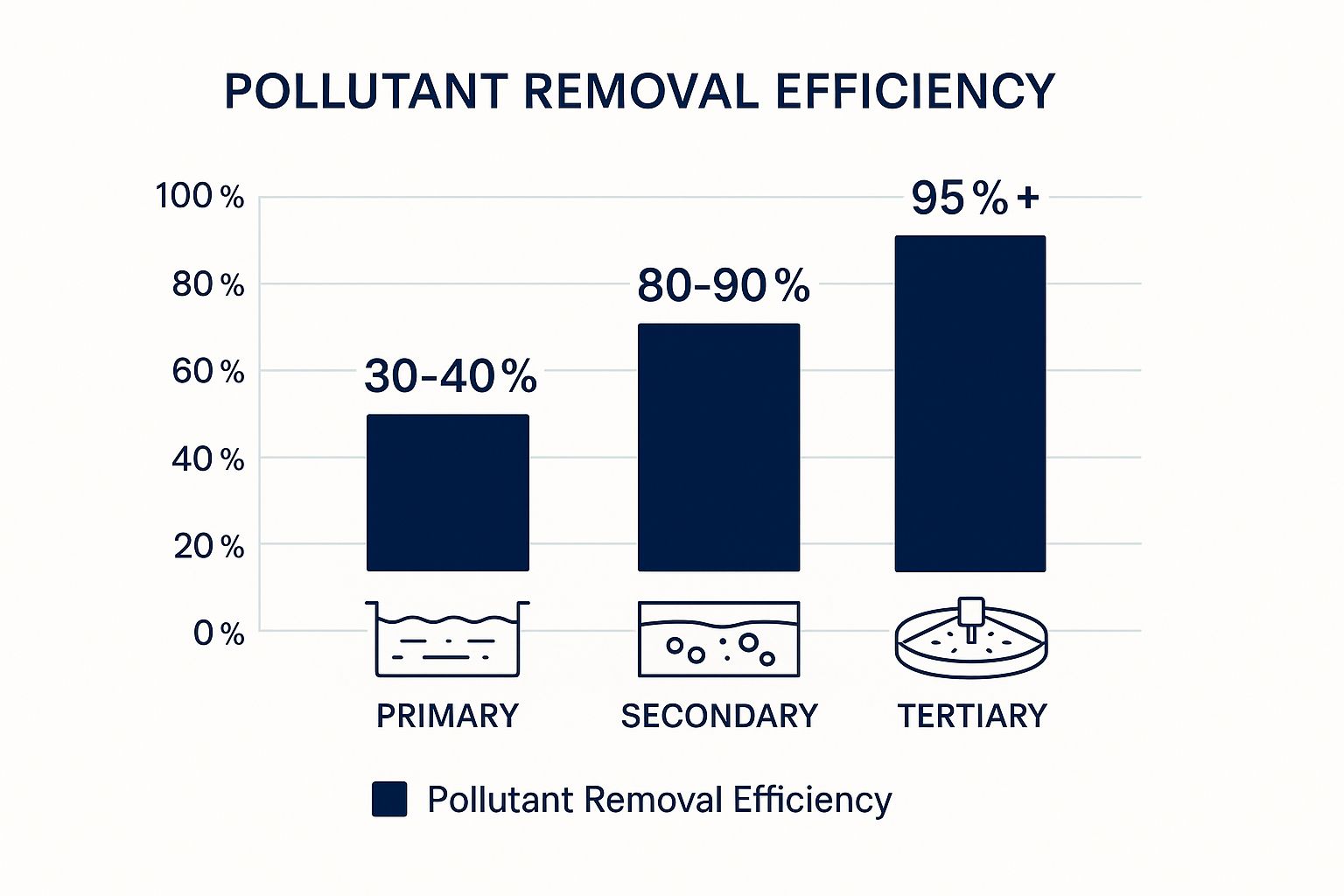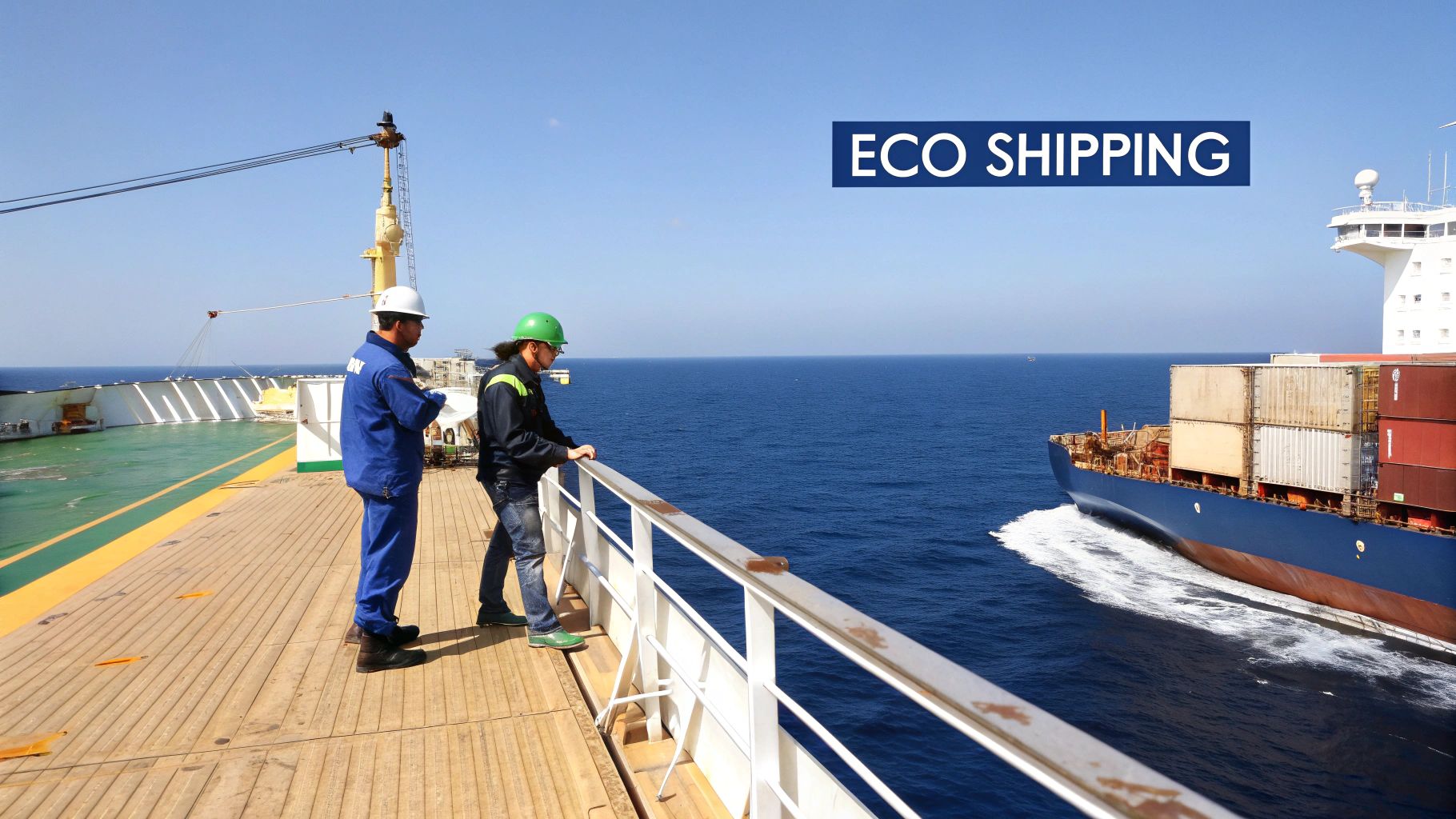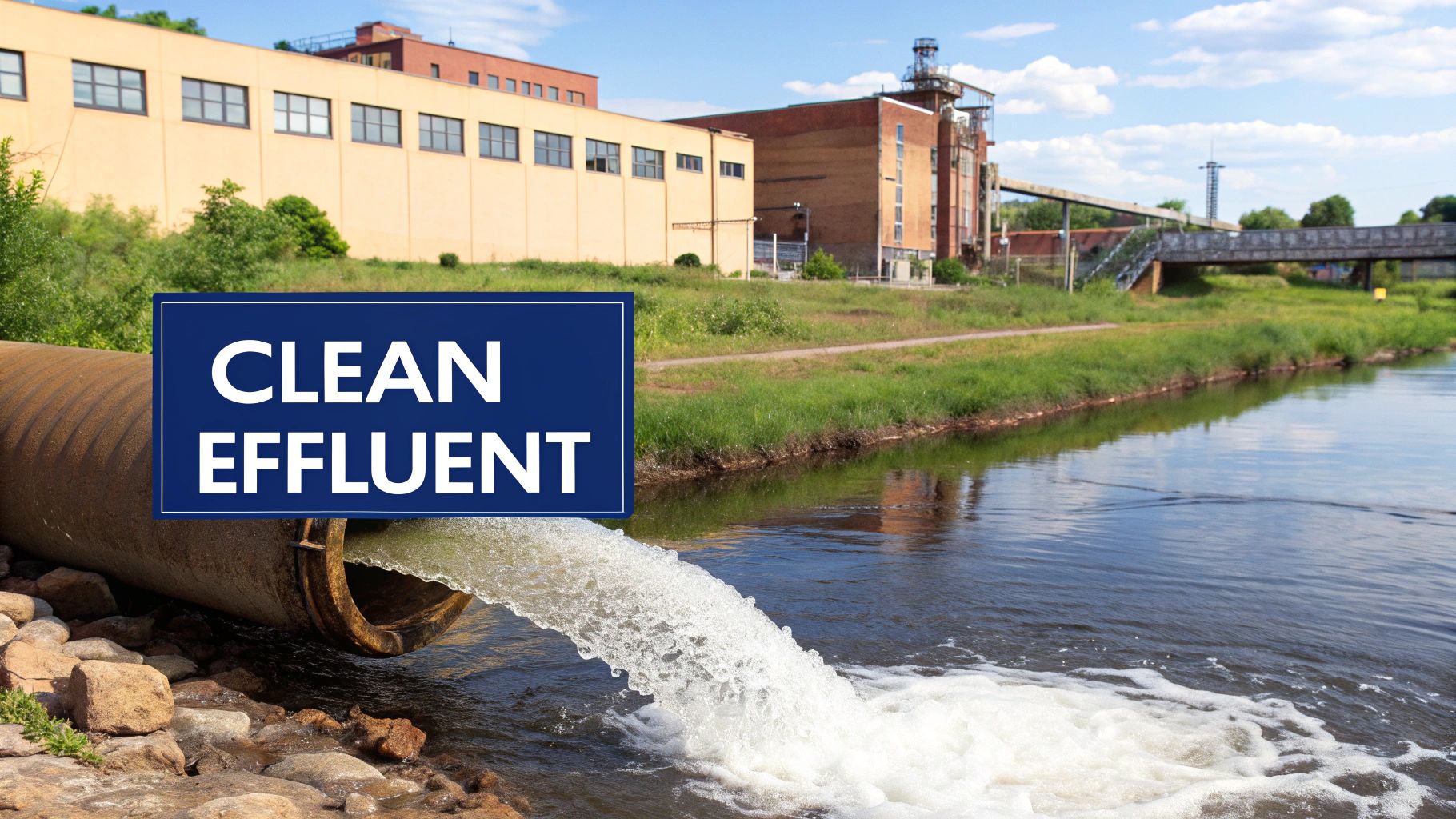The Alarming Reality of Our Oceans Today

Our oceans are vital to the health of our planet. However, they face a serious threat: pollution. This isn't just an environmental problem; it directly impacts marine life, human health, and the global economy. Understanding the scale of this issue is the first step towards finding solutions.
One of the most visible signs of ocean pollution is plastic debris. This includes large pieces of plastic, as well as microplastics, tiny particles that are often invisible to the naked eye. These microplastics contaminate the marine environment and enter the food chain, causing significant harm. Even seemingly clean waters can contain these hidden dangers.
The effects of pollution are widespread. Marine animals, from small plankton to large whales, are harmed by ingesting or becoming entangled in debris. This disrupts the entire ecosystem, affecting biodiversity and the overall health of our oceans. The chemicals and toxins released from pollutants also contaminate seafood, posing a risk to human health. Protecting our oceans is also about protecting ourselves.
The Impact of Plastic Pollution on Marine Life
The impact of plastic pollution is devastating. Nearly 1000 species are affected by plastic debris. 100 million marine animals die each year from plastic waste, and 100,000 marine mammals are killed by entanglement or ingestion. One in three marine mammal species has been found entangled in litter. North Pacific fish ingest approximately 12-14,000 tons of plastic annually. For more detailed statistics, visit: https://www.condorferries.co.uk/marine-ocean-pollution-statistics-facts
Beyond Plastic: Other Pollutants Threatening Our Seas
Plastic is a major concern, but other pollutants also threaten our oceans. Chemical runoff from agriculture and industrial activities introduces harmful substances into the water. This disrupts marine ecosystems and harms aquatic life. Noise pollution from shipping and other human activities interferes with marine mammal communication and navigation. These less obvious forms of pollution are just as damaging and require attention. Understanding how our actions, both on land and at sea, contribute to the problem is crucial for developing solutions.
The Importance of Preventing Marine Pollution
Preventing marine pollution isn’t just about cleaning up existing damage; it requires changing our behaviors and practices. We must recognize the connection between human activity and ocean health to create a sustainable future. Every effort, from individual actions to global policy changes, contributes to protecting this vital resource. This understanding is essential for developing effective and lasting solutions to prevent marine pollution.
Breaking Up With Single-Use Plastics For Good

Single-use plastics offer convenience, but their environmental impact, especially on our oceans, is devastating. We need to rethink our dependence on these items and find more sustainable solutions. Fortunately, reducing your plastic footprint doesn't require a dramatic life change. It involves making conscious decisions and incorporating practical swaps into your everyday routine. You might be interested in: How to maintain your boat.
Conducting a Personal Plastic Audit
Understanding your plastic consumption habits is the first step. Try conducting a plastic audit. Track the plastic items you use for one week. This simple exercise will highlight your biggest areas of plastic use. You might be surprised how many plastic bags, straws, or water bottles you use. This awareness allows you to focus on making impactful changes.
Identifying High-Impact Swaps
After identifying your main sources of plastic waste, you can target high-impact changes. Switching from disposable water bottles to a reusable water bottle can significantly reduce your plastic consumption. Carrying reusable shopping bags and choosing package-free produce are other simple yet effective changes. These small adjustments add up over time.
Addressing Common Challenges
Moving away from single-use plastics can feel challenging. Convenience, cost, and social norms are common concerns. However, reusable alternatives exist for almost every single-use plastic item. Reusable water bottles, coffee cups, and food containers are becoming increasingly affordable and readily available. As more people adopt sustainable practices, any perceived social stigma around reusable items is fading.
To help you get started, here’s a table showcasing some practical alternatives to common single-use plastics:
Single-Use Plastic Alternatives
| Single-Use Item | Sustainable Alternative | Environmental Benefit | Cost Comparison |
|---|---|---|---|
| Plastic Shopping Bag | Reusable Shopping Bag (cloth, canvas, etc.) | Reduces plastic waste in landfills and oceans; Conserves resources | Higher initial cost, but saves money long-term |
| Plastic Water Bottle | Reusable Water Bottle (stainless steel, glass) | Reduces plastic waste; Saves money on bottled water | Higher initial cost, but saves money long-term |
| Plastic Straw | Reusable Straw (stainless steel, bamboo, glass), No straw | Reduces plastic waste in oceans and landfills | Higher initial cost for reusable straws, but free to skip the straw altogether |
| Disposable Coffee Cup | Reusable Coffee Cup/Mug | Reduces paper and plastic waste | Higher initial cost, but saves money on disposable cups |
| Plastic Food Containers | Reusable Food Containers (glass, stainless steel) | Reduces plastic waste; Healthier food storage | Higher initial cost, but saves money and is more durable |
| Plastic Cutlery | Reusable Cutlery (bamboo, metal) | Reduces plastic waste | Higher initial cost, but reusable and long-lasting |
| Plastic Wrap | Beeswax Wraps, Reusable Silicone Covers | Reduces plastic waste | Moderate initial cost, lasts several months to a year |
This table offers a quick glance at how simple swaps can benefit the environment and your wallet in the long run. While reusable options might have a slightly higher upfront cost, they often save money over time by eliminating the need for constant repurchasing.
Visualizing Your Impact: The Power of Collective Action
This data chart illustrates how reducing your single-use plastic consumption can make a real difference.

As the data chart shows, seemingly small changes can lead to significant reductions in your yearly plastic waste. Refusing plastic straws, for instance, can save 10 pounds of plastic annually. Collectively, these individual actions create meaningful change.
One crucial step in combating marine pollution involves international cooperation. In March 2022, the UN agreed to create a treaty to address plastic pollution. As of 2023, an estimated 75 to 199 million tons of plastic are already in our oceans, with an additional 33 billion pounds added every year. This treaty, along with initiatives from organizations like Ocean Conservancy, aims to reduce plastic production and encourage a zero-waste economy. Learn more about the impact of plastic pollution: Plastic Pollution Facts and Statistics.
Mastering Waste Management That Actually Works

Proper waste management is essential for protecting our oceans. Surprisingly, even if you live far inland, incorrect disposal methods can still lead to marine pollution. This highlights the importance of understanding how to manage our waste effectively. Even small, everyday items can have a big impact.
Our recycling habits and the way we dispose of hazardous materials both play a crucial role. Let's explore some practical steps for improving waste management practices.
Navigating the Recycling Maze
Recycling can feel complicated. Rules vary depending on your location, creating confusion and often leading to recyclable materials ending up in landfills. For example, some areas might not accept certain plastics or may require specific cleaning steps.
To make your recycling efforts count, research your local guidelines. This will help ensure your recyclables are properly processed and don't contaminate other materials, rendering them unusable.
Proper Disposal of Problematic Items
Certain items require special handling due to their hazardous components. Batteries, electronics, and medications are prime examples. If not disposed of correctly, these items can release harmful chemicals into the environment.
Many communities offer designated drop-off locations or organize special collection days for these materials. By using these services, you can keep hazardous waste out of the regular waste stream and minimize environmental contamination. This helps protect our water sources and, ultimately, the ocean.
Preventing Microplastic Generation
Microplastics are a major source of ocean pollution, often resulting from the breakdown of larger plastic items. However, they are also intentionally added to common household products like cosmetics and cleaning supplies.
By learning to identify these hidden microplastic sources, you can make informed purchasing decisions. Choose products with natural ingredients and avoid those containing microbeads or plastic microfibers. Consider using a laundry filter designed to catch these fibers from your washing machine. Reducing our reliance on single-use plastics is another important step. Choosing sustainable takeout packaging is one way to start: Sustainable Takeout Packaging.
Community-Level Actions
While individual actions are important, community initiatives significantly amplify their impact. Organizing local cleanups, advocating for better waste management infrastructure, and educating others about responsible disposal practices are all effective strategies.
A community cleanup event not only removes litter but also raises awareness about pollution. Advocating for improved recycling programs or composting initiatives in your area can drive systemic change. These combined efforts can create a ripple effect, inspiring others to protect our oceans.
Becoming an Effective Ocean Policy Advocate
Individual actions, like reducing plastic use and disposing of waste properly, are crucial first steps in protecting our oceans. However, for truly significant change, we need effective ocean policies. This involves understanding existing laws and actively participating in shaping future regulations. Even if you've never been politically active, you can make a difference.
Understanding Ocean Policies and Regulations
The first step to effective advocacy is understanding current laws. Numerous national and international agreements address marine pollution, but their scope and effectiveness vary. Researching these policies helps identify areas needing improvement or stronger enforcement. For example, the 2025 target for sustainable ocean management, under initiatives like the EU Ocean Pact, and global goals of 100% sustainable management by 2030 are important milestones. The fact that 8 to 10 million metric tons of plastic, about 80% of all marine debris, enters the ocean yearly underscores the urgency for policy action. Learn more: Opportunities for Ocean Action in 2025.
Contacting Decision-Makers
Contacting your elected officials directly is powerful. Phone calls, emails, and letters expressing your concerns about ocean pollution can influence policy. Focus on specific legislation or regulatory proposals to make clear, actionable requests. Sharing personal stories about how ocean pollution impacts your community adds weight to your message.
Supporting Effective Organizations
Many organizations are dedicated to ocean conservation and advocacy. Supporting them through donations or volunteering amplifies your impact. Choose reputable organizations aligned with your values and with proven track records of policy change. This leverages their expertise and resources for ocean protection.
Making Your Voice Count During Key Periods
Certain times, such as public comment periods on proposed regulations or election cycles, offer greater opportunities for influencing policy. Stay informed about these key moments and participate actively. Submitting comments on proposed rules, attending public hearings, or questioning candidates about their ocean policy stances can significantly impact outcomes. Transitioning to a circular economy can dramatically reduce waste. Explore how advocating for a circular economy framework can influence policy decisions.
Learning From Successful Initiatives
Studying successful citizen-led campaigns for ocean policy change offers valuable lessons. Analyze their strategies, tactics, and messaging for inspiration and practical insights. Read also: Mastering the Art of Fueling. By learning from past successes, you can increase your chances of making a real difference in preventing marine pollution. Collective action, combined with strategic policy advocacy, is essential for a healthier future for our oceans.
Responsible Ocean Recreation That Protects Marine Life

For those of us who love spending time on the ocean, being responsible starts with minimizing our impact on the marine environment. This includes everything from boating and fishing to swimming and simply relaxing on the beach. Let's explore how we can better protect the waters we enjoy.
Responsible Boating Practices
Boating is a popular pastime, but it can unfortunately contribute to ocean pollution. Engine emissions, fuel leaks, and sewage discharge are all potential sources of contamination. Luckily, small changes can make a big difference.
Regular engine maintenance can reduce emissions and the risk of fuel leaks. Using eco-friendly cleaning products on your boat will prevent harsh chemicals from entering the water. Properly disposing of sewage and avoiding gray water discharge will further protect marine ecosystems. For boat owners seeking a spill-free fueling option, the CLiX Fueling Solutions system offers an automatic shutoff. This helpful feature prevents overfills and helps protect our waterways.
Sustainable Fishing Techniques
Lost and discarded fishing gear, especially “ghost nets,” poses a serious threat to marine animals. These nets can continue to catch fish and other creatures for years, leading to needless deaths. Using biodegradable fishing lines and retrieving any lost gear are important steps to preventing entanglement and harm to marine life.
Respecting catch limits and following fishing regulations ensures the long-term health of fish populations. Choosing sustainable seafood options when you're dining out or shopping at the grocery store further supports responsible fishing practices.
Beachgoing Best Practices
Even a relaxing day at the beach can contribute to pollution. Leaving behind trash, even seemingly harmless items like cigarette butts, pollutes the sand and water. These small pieces of trash can be harmful to birds and other wildlife.
Using reef-safe sunscreen is important for protecting coral reefs from harmful chemicals. Many popular sunscreens contain chemicals that can damage or even kill coral. Participating in beach cleanups actively removes existing pollution and raises awareness about the issue.
Minimizing Pollution From Recreational Activities
Many everyday recreational items can contribute to marine pollution. Plastic bags, food wrappers, and disposable cups easily end up in the ocean, harming marine life.
Bringing reusable alternatives, like water bottles, food containers, and bags, minimizes waste. Avoiding single-use plastics altogether makes a significant difference in reducing your environmental impact. Consider the cumulative effect: if every beachgoer made these small changes, the positive impact on our oceans would be immense.
Practical Tips for Responsible Recreation
Here's a quick guide to help you make sustainable choices while enjoying the ocean:
- Choose reusable items: Bring your own water bottle, food containers, and bags to the beach or on your boat.
- Dispose of waste properly: Never leave trash behind; use designated bins or take it home with you.
- Maintain your boat: Regular maintenance prevents leaks and reduces emissions.
- Use eco-friendly products: Choose cleaning products and sunscreen that are safe for marine life.
- Respect fishing regulations: Adhere to catch limits and avoid using harmful fishing gear.
- Participate in cleanups: Join a local beach or waterway cleanup effort.
- Educate others: Share your knowledge about responsible recreation with friends and family.
By adopting these simple practices, we can ensure that our enjoyment of the ocean doesn’t come at the expense of its health. We can all play a part in preserving its beauty for future generations.
Smart Shopping Choices That Safeguard Our Seas
Every purchase we make has an environmental impact, including on our oceans. This section explores how our shopping habits contribute to marine pollution and what we can do to make more ocean-friendly choices. We’ll learn how to spot truly sustainable products and avoid misleading “green” marketing.
Decoding Eco-Labels and Certifications
Understanding eco-labels is crucial for informed shopping. Many products claim to be “eco-friendly,” but not all labels hold the same weight. Some certifications adhere to strict environmental standards, while others are merely marketing tactics.
Look for certifications from reputable organizations with rigorous standards. Research the meaning behind labels to understand what they represent. This empowers you to choose products that align with your values and minimize your environmental footprint.
The Real Impact of Everyday Items
Many common household products have a hidden impact on our oceans. For example, some cleaning products contain chemicals that harm marine life. Certain clothing types shed microplastic fibers when washed, which eventually pollute the ocean.
These seemingly harmless purchases can have unintended consequences. By being mindful of these hidden impacts, we can choose alternative products and help reduce marine pollution.
Let's take a closer look at the impact consumer choices have on our marine environment. The table below highlights harmful choices along with ocean-friendly alternatives and their respective impacts.
Impact of Consumer Choices on Marine Pollution
| Product Category | Harmful Choices | Ocean-Friendly Alternatives | Environmental Impact |
|---|---|---|---|
| Cleaning Supplies | Products containing phosphates, chlorine bleach, and other harsh chemicals | Phosphate-free detergents, natural cleaning solutions (vinegar, baking soda) | Harsh chemicals pollute waterways and harm marine life. Natural alternatives are biodegradable and less harmful. |
| Clothing | Synthetic fabrics (polyester, nylon, acrylic) that shed microplastics | Organic cotton, recycled materials (e.g., recycled polyester), linen, hemp | Microplastics contaminate the ocean, harming marine animals and ecosystems. Natural and recycled fibers reduce microplastic pollution. |
| Boating | Fuel spills, improper waste disposal | CLiX Fueling Solutions system, proper waste management practices, eco-friendly boat cleaning products | Fuel spills pollute water and harm marine life. Spill-prevention systems and responsible waste management protect marine ecosystems. |
As this table demonstrates, even small changes in our purchasing habits can significantly reduce our impact on the ocean. By making conscious decisions, we can contribute to a healthier marine environment.
Making Informed Decisions: From Cleaning Supplies to Clothing
Choosing sustainable products doesn't have to be overwhelming. Small changes add up. Opt for phosphate-free detergents, natural cleaning solutions, and clothing made from organic cotton or recycled materials.
These simple swaps reduce the amount of harmful chemicals and microplastics entering our waterways. For boat owners, preventing fuel spills is vital. The CLiX Fueling Solutions system offers a spill-free fueling experience with an automatic shutoff. This prevents accidental overfills and protects our waters. Read also: How to shop smart for your boat.
Voting With Your Wallet: Consumer Demand and Industry Change
Our purchases send a strong message to companies. When we choose sustainable products, we demonstrate our value for environmental responsibility. This creates demand for more ocean-friendly options.
As this demand grows, businesses are more likely to invest in environmentally responsible practices. "Voting with your wallet" drives positive change and reduces pollution on a larger scale.
Balancing Impact With Practicality
Making sustainable choices doesn't require sacrificing practicality or effectiveness. Many eco-friendly products perform just as well, or even better, than conventional options.
The key is to find sustainable choices that fit your lifestyle and budget. This ensures a long-term commitment to protecting our oceans. By making mindful choices, we all contribute to a healthier ocean.
Building a Community of Ocean Protectors
Preventing marine pollution requires a collective effort. While individual actions are vital, collaboration amplifies their impact. This section explores how to transform individual initiatives into community-wide action through engagement and education.
The Power of Collective Action: From Individuals to Communities
Imagine a single raindrop falling on dry land. Its impact is minimal. But consistent rainfall over time can revitalize a barren landscape. Similarly, individual actions against marine pollution become significantly more effective when combined within a community. This collective approach generates a powerful force for change.
Organizing Effective Beach Cleanups
Beach cleanups offer an excellent opportunity to engage communities and directly tackle pollution. However, for lasting change, they must be more than one-time events. They should be integrated into a broader strategy to raise awareness and promote sustainable practices.
For instance, incorporating educational elements into cleanups can inform participants about pollution sources and prevention strategies. Following up after the event reinforces these messages and encourages continued involvement.
Mentoring the Next Generation of Ocean Advocates
Children and young adults represent the future of ocean conservation. Mentorship programs that educate them about marine pollution and empower them to take action are essential. These programs could include educational workshops, hands-on conservation activities, or leadership training.
Such initiatives not only foster a passion for ocean conservation but also equip young people with the necessary skills to become effective advocates. Investing in future generations strengthens the foundation for long-term ocean health.
Leveraging Digital Platforms to Amplify Conservation Messages
Social media and other online platforms are invaluable for raising awareness about marine pollution and mobilizing communities. Sharing impactful stories, educational materials, and calls to action can reach a vast audience and inspire widespread participation.
Organizing online campaigns and challenges amplifies the impact of local efforts and connects individuals with shared goals. These digital resources offer an accessible and powerful way to expand the community of ocean protectors.
Creating Sustainable Behavioral Shifts: The Psychology of Change
Changing established behaviors requires more than just information. It necessitates understanding the psychology of habits and motivation. Focusing on positive reinforcement and community building can be more impactful than guilt or fear tactics.
For example, highlighting the positive effects of actions like reducing plastic use is often more motivating than emphasizing the negative consequences of pollution. Celebrating community achievements and acknowledging individual contributions reinforces these behaviors and cultivates a culture of ocean stewardship. Tracking progress with measurable metrics, such as the amount of waste diverted from landfills or the number of cleanup participants, provides concrete evidence of the collective impact. This encourages continued engagement and strengthens the power of collective action.
Take the first step towards cleaner waters and a healthier planet with CLiX Fueling Solutions. This innovative system prevents fuel spills, protecting both your boat and the environment. Learn more at CLiX Fueling Solutions.











